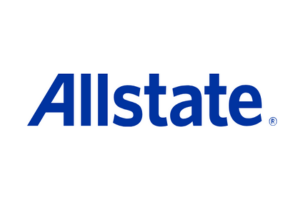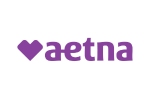Will health insurance cover Tranexamic Acid?
Are you wondering if your health insurance will cover tranexamic acid? Find out all the details and possibilities in this informative article. Explore the options for getting the treatment you need.
Read more Secured with SHA-256 Encryption






Find the Lowest Car Insurance Rates Today
Quote’s drivers have found rates as low as $42/month in the last few days!




Table of Contents
Table of Contents


Insurance Content Managing Editor
Daniel S. Young began his professional career as chief editor of The Chanticleer, a Jacksonville State University newspaper. He also contributed to The Anniston Star, a local newspaper in Alabama. Daniel holds a BA in Communication and is pursuing an MA in Journalism & Media Studies at the University of Alabama. With a strong desire to help others protect their investments, Daniel has writt...
Daniel S. Young


Licensed Insurance Producer
Dani Best has been a licensed insurance producer for nearly 10 years. Dani began her insurance career in a sales role with State Farm in 2014. During her time in sales, she graduated with her Bachelors in Psychology from Capella University and is currently earning her Masters in Marriage and Family Therapy. Since 2014, Dani has held and maintains licenses in Life, Disability, Property, and Casualt...
Dani Best
Updated January 2025
Tranexamic Acid is a medication commonly used to treat heavy bleeding, particularly in women with conditions such as menorrhagia or fibroids. If you have been prescribed Tranexamic Acid, you may be wondering whether your health insurance will cover the cost of this medication. In this article, we will delve into the details of Tranexamic Acid, the role of health insurance, and how to check if your insurance covers this prescription drug.
Understanding Tranexamic Acid
Tranexamic Acid, also known as Cyklokapron or Lysteda, is a synthetic drug that belongs to a class of medications called antifibrinolytics. It works by preventing the breakdown of blood clots in the body, thus reducing excessive bleeding.
Tranexamic Acid has been approved by the Food and Drug Administration (FDA) for various uses, including the treatment of heavy menstrual bleeding, nosebleeds, and bleeding disorders. It is sometimes used in surgical procedures to prevent or reduce bleeding as well.
When it comes to heavy menstrual bleeding, Tranexamic Acid has shown to be effective in reducing the amount and duration of bleeding. It works by stabilizing the lining of the uterus, preventing the breakdown of blood clots, and reducing the release of chemicals that promote bleeding. This can significantly improve the quality of life for individuals who experience heavy periods.
In addition to its use in menstrual bleeding, Tranexamic Acid has also been found to be helpful in managing nosebleeds. It can be used as a nasal spray or taken orally to help control and reduce the frequency of nosebleeds. By promoting blood clot formation and preventing their breakdown, Tranexamic Acid can provide relief for individuals who suffer from recurrent nosebleeds.
Tranexamic Acid is also utilized in the management of bleeding disorders such as hemophilia. Hemophilia is a genetic condition characterized by the inability of the blood to clot properly. By inhibiting the breakdown of blood clots, Tranexamic Acid can help prevent excessive bleeding in individuals with this condition, reducing the risk of complications and improving overall well-being.
While Tranexamic Acid generally has a good safety profile, it is essential to be aware of possible side effects. Common side effects may include nausea, diarrhea, headache, and fatigue. These side effects are usually mild and resolve on their own. However, if they persist or worsen, it is important to consult with your healthcare provider.
In rare cases, allergic reactions or blood clots may occur with the use of Tranexamic Acid. Allergic reactions can present as skin rashes, itching, swelling, or difficulty breathing. If you experience any of these symptoms, it is crucial to seek immediate medical attention. Blood clots, although rare, can be serious and may manifest as pain, swelling, warmth, or redness in the affected area. If you notice any of these signs, it is important to contact your healthcare provider promptly.
It is crucial to consult with your healthcare provider for personalized advice and guidance regarding the use of Tranexamic Acid. They can assess your individual medical history, discuss potential risks and benefits, and determine the most appropriate dosage and duration of treatment for your specific condition.
Free Health Insurance Comparison
Compare Quotes From Top Companies and Save
Secured with SHA-256 Encryption
The Role of Health Insurance
Health insurance plays a crucial role in providing coverage for various medical expenses, ensuring that individuals have access to necessary treatments and medications. One key aspect of health insurance coverage is the inclusion of prescription drugs. These medications are vital for managing and treating a wide range of medical conditions, from chronic illnesses to acute illnesses.
How Health Insurance Works
Health insurance plans typically have a formulary, which is a list of medications covered by the plan. This formulary is carefully curated to include a wide range of medications that are commonly prescribed and deemed essential for maintaining good health. The inclusion of prescription drugs in health insurance plans aims to alleviate the financial burden on individuals, making these medications more affordable and accessible.
However, it is important to note that not all medications may be included in the formulary of a health insurance plan. The specific medications covered can vary depending on the plan and insurance provider. This variation is often influenced by factors such as the medication’s effectiveness, availability of alternative treatments, cost, and the specific medical condition being treated.
For example, medications like Tranexamic Acid, which is commonly used to manage heavy menstrual bleeding or prevent excessive bleeding during certain medical procedures, may have different levels of coverage across various health insurance plans. Some plans may fully cover the cost of Tranexamic Acid, while others may require individuals to pay a portion of the cost out-of-pocket.
Factors Influencing Health Insurance Coverage
When it comes to health insurance coverage for prescription drugs, several factors come into play. Insurance plans carefully evaluate these factors to determine the level of coverage for specific medications.
One significant factor considered by insurance plans is the effectiveness of the medication. Insurance providers want to ensure that the medications covered are proven to be effective in treating the medical conditions they are intended for. Extensive research, clinical trials, and medical guidelines are often taken into account when determining the coverage for a particular drug.
Another factor that influences health insurance coverage for prescription drugs is the availability of alternative treatments. Insurance plans may consider whether there are other medications or therapies that can achieve similar outcomes at a lower cost. This evaluation helps insurance providers strike a balance between providing effective treatments and managing healthcare costs.
Cost is also a crucial factor in determining health insurance coverage for prescription drugs. Insurance plans carefully assess the cost of medications and weigh it against the potential benefits they offer. This evaluation helps create a sustainable and cost-effective healthcare system that can cater to the needs of a diverse population.
Lastly, the specific medical condition being treated can also impact health insurance coverage for prescription drugs. Some medical conditions may require specialized medications that are more expensive or have limited alternatives. In such cases, insurance plans may provide more comprehensive coverage to ensure individuals have access to the necessary treatments.
Overall, health insurance coverage for prescription drugs is a complex process that takes into account various factors. By carefully evaluating the effectiveness, availability of alternatives, cost, and the specific medical condition being treated, insurance plans aim to provide comprehensive coverage that addresses the healthcare needs of individuals.
Health Insurance and Prescription Drugs
General Policies on Prescription Drug Coverage
Most health insurance plans provide coverage for prescription drugs to some extent. However, the level of coverage can vary widely. Some plans may cover a broader range of medications, while others may have more restrictive policies.
Exceptions and Limitations in Drug Coverage
It is crucial to review your insurance policy to understand any exceptions or limitations in prescription drug coverage. Some plans may require prior authorization for certain medications or have restrictions on the quantity or dosage of drugs covered.
Case Study: Tranexamic Acid and Health Insurance
Does Health Insurance Cover Tranexamic Acid?
Whether Tranexamic Acid is covered by health insurance depends on the specific insurance plan. It is necessary to consult your insurance provider to determine coverage details.
Factors Affecting Coverage of Tranexamic Acid
Insurance coverage for Tranexamic Acid may be influenced by various factors, such as the purpose of its use, the dosage prescribed, and whether alternative treatments are available. Generally, if Tranexamic Acid is prescribed for an FDA-approved indication, the chances of coverage may be higher.
Personal Experiences and Testimonials
While insurance coverage can vary, many people have reported successful reimbursement for Tranexamic Acid through their health insurance plans. Personal experiences and testimonials can provide insight into potential coverage options. It may be helpful to seek guidance from online communities or support groups that specialize in bleeding disorders or women’s health concerns.
Free Health Insurance Comparison
Compare Quotes From Top Companies and Save
Secured with SHA-256 Encryption
How to Check If Your Insurance Covers Tranexamic Acid
Contacting Your Insurance Provider
If you are considering or have already been prescribed Tranexamic Acid, it is advisable to contact your insurance provider directly to inquire about coverage. The insurance company can provide detailed information regarding your individual policy and the coverage available for this medication.
Understanding Your Policy’s Drug List
Review your insurance policy’s drug list, also known as a formulary, to see if Tranexamic Acid is included and what specific coverage level applies. If Tranexamic Acid is not covered or has limited coverage, you can discuss alternative treatment options or potential appeals with your healthcare provider and insurance company.
Seeking Assistance from Healthcare Providers
Your healthcare provider, such as your primary care physician or gynecologist, can also play a crucial role in helping you navigate the process of checking insurance coverage for Tranexamic Acid. They can provide supporting documentation or assist with any necessary prior authorization requests.
In conclusion, the coverage of Tranexamic Acid by health insurance plans can vary. It is important to understand the specific details of your insurance policy, such as formulary coverage, limitations, and exception policies. By contacting your insurance provider and working closely with your healthcare provider, you can gather the necessary information to make informed decisions regarding the coverage and cost of Tranexamic Acid.
Frequently Asked Questions
Will health insurance cover Tranexamic Acid?
Health insurance coverage for Tranexamic Acid may vary depending on the specific insurance plan. It is recommended to check with your insurance provider to determine if this medication is covered under your policy.
What is Tranexamic Acid used for?
Tranexamic Acid is commonly used to control or prevent excessive bleeding, particularly in cases of heavy menstrual bleeding, nosebleeds, or bleeding caused by certain medical conditions or surgeries.
Is Tranexamic Acid available over the counter?
No, Tranexamic Acid is a prescription medication and is not available over the counter. It requires a prescription from a healthcare professional.
What are the potential side effects of Tranexamic Acid?
Potential side effects of Tranexamic Acid may include nausea, vomiting, diarrhea, headache, dizziness, muscle or joint pain, and changes in vision. It is important to consult with your healthcare provider about any potential side effects.
Can Tranexamic Acid be used during pregnancy?
Tranexamic Acid should be used during pregnancy only if specifically prescribed by a healthcare professional. It is important to discuss the potential risks and benefits with your doctor before using this medication during pregnancy.
Can Tranexamic Acid be used by individuals with a history of blood clots?
Individuals with a history of blood clots or certain clotting disorders should use Tranexamic Acid with caution and under the guidance of a healthcare professional. It is important to discuss your medical history and any potential risks with your doctor before using this medication.
Get a FREE Quote in Minutes
Insurance rates change constantly — we help you stay ahead by making it easy to compare top options and save.


